Diana has been planting pots for me for 10 years. She starts with a square of landscape fabric over the drain hole, and adds drainage material to 2/3 of the pot. Another layer of landscape fabric prevents the soil from sifting down into the drainage layer. We use a topsoil/compost mix for pots. Soil-less mixes are great for professional growers, as it is sterile. Professional growers know how to water and fertilize properly. I like real soil. We mix in osmocote, a time release fertilizer; the rate of release speeds up as the soil temperature goes up. Apply according to directions. We go for that lush look; we pack the plants in, so they look great from the start. Later, we groom the pots. We remove excess growth underneath to keep the air circulation good, and the possibility of fungus low. We cut back the dead flowers and leaves. We may even shape the overall composition by trimming and cutting back. Does she not make it look easy??
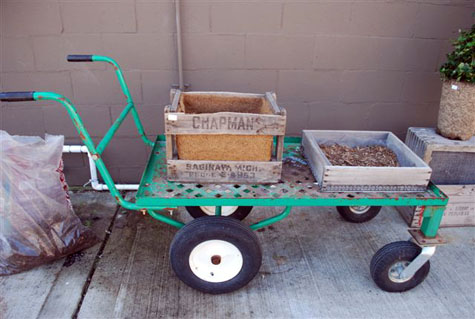
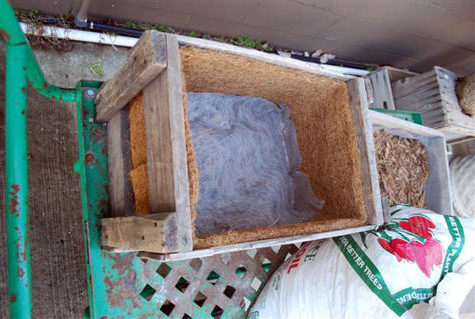
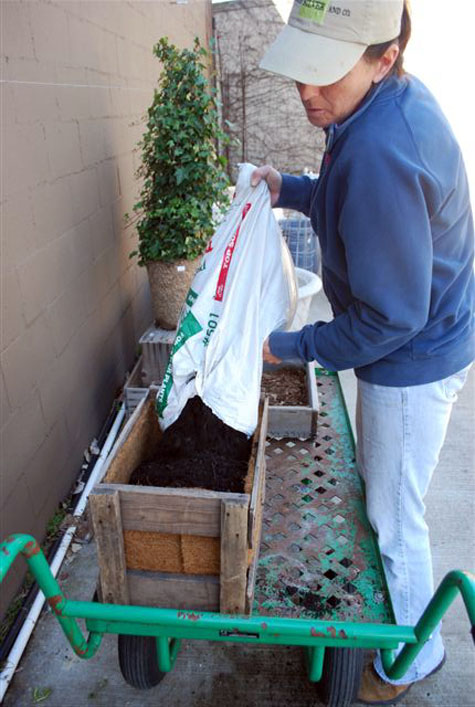
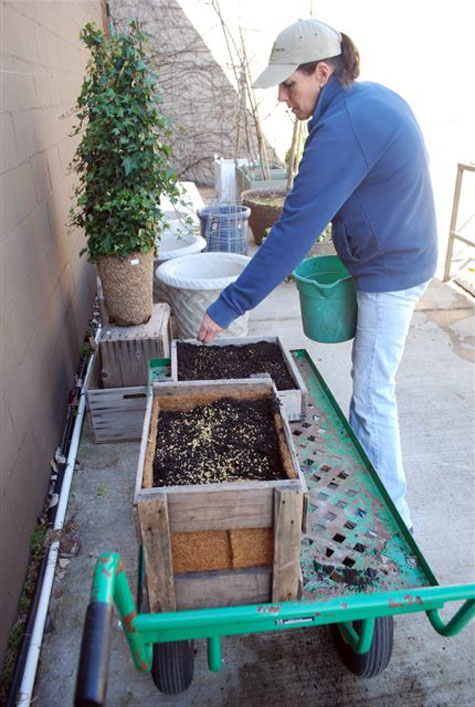
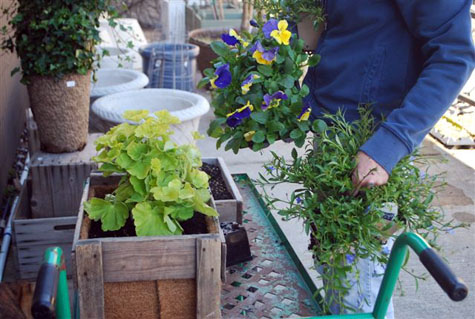

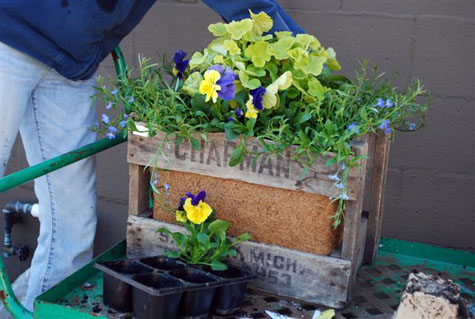
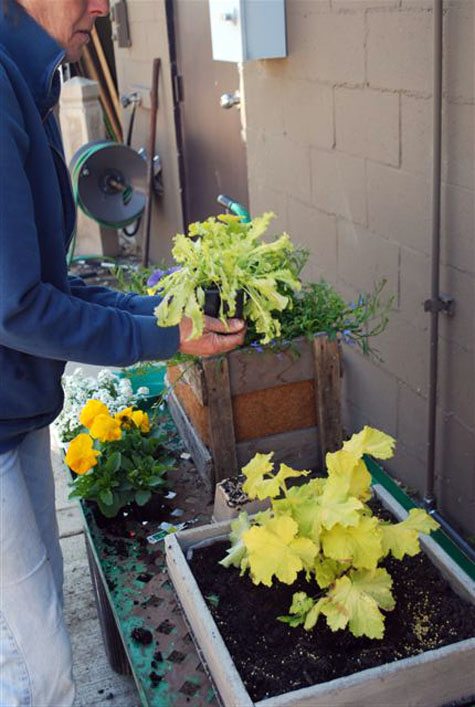
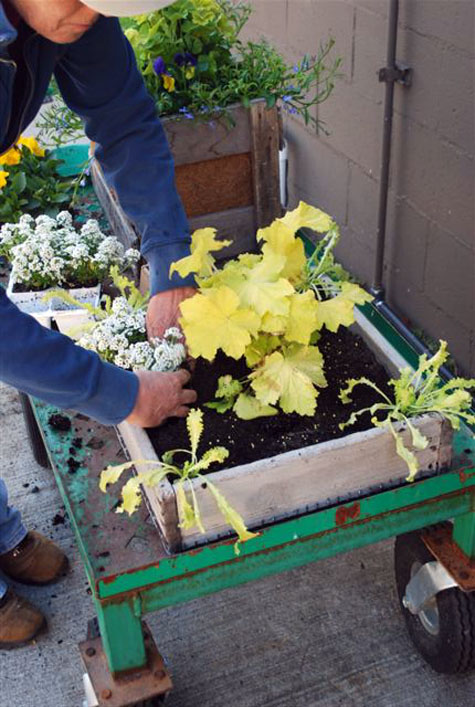

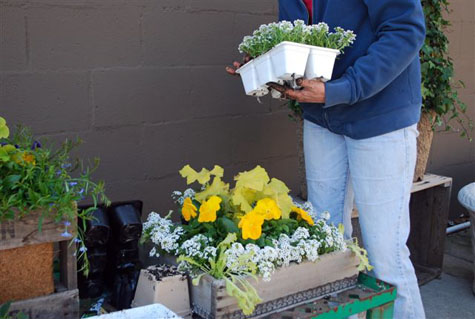 Spring plantings do look great in old crates, wood boxes, buckets and baskets. Landscape fabric can help hold the soil where you want it; coir sheets can be cut for boxes with big open spaces. Coir is a mat woven from the fibers of the hull of the coconut; it is sometimes called coco fiber. Have at planting some pots.
Spring plantings do look great in old crates, wood boxes, buckets and baskets. Landscape fabric can help hold the soil where you want it; coir sheets can be cut for boxes with big open spaces. Coir is a mat woven from the fibers of the hull of the coconut; it is sometimes called coco fiber. Have at planting some pots.
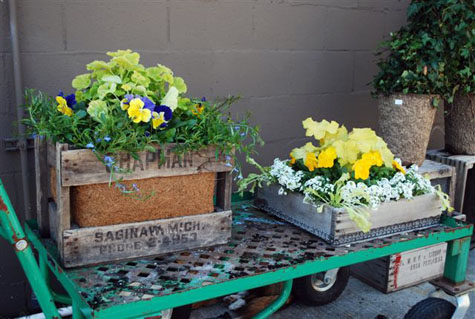
When you say she adds 2/3 of the planter with drainage material do you mean the filter fabric? or could you clarify how you suggest filling larger containers and what you recommend so as to not put too much soil into the planter?
Dear David, fill 2/3 of your container with a drainage material-bagged bark, old cell packs, gravel-or any other material which will allow water to pass through freely. Then put a layer of landscape fabric over it, and add your soil. The fabric will keep your soil from sifting down into the drainage layer. Good planting! Deborah